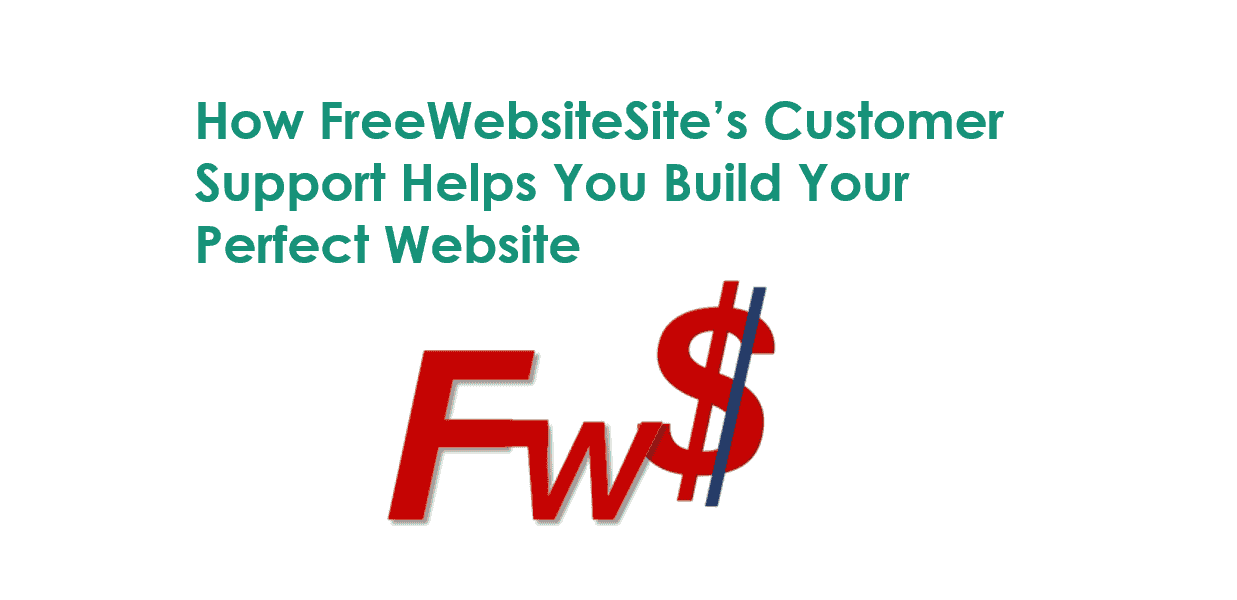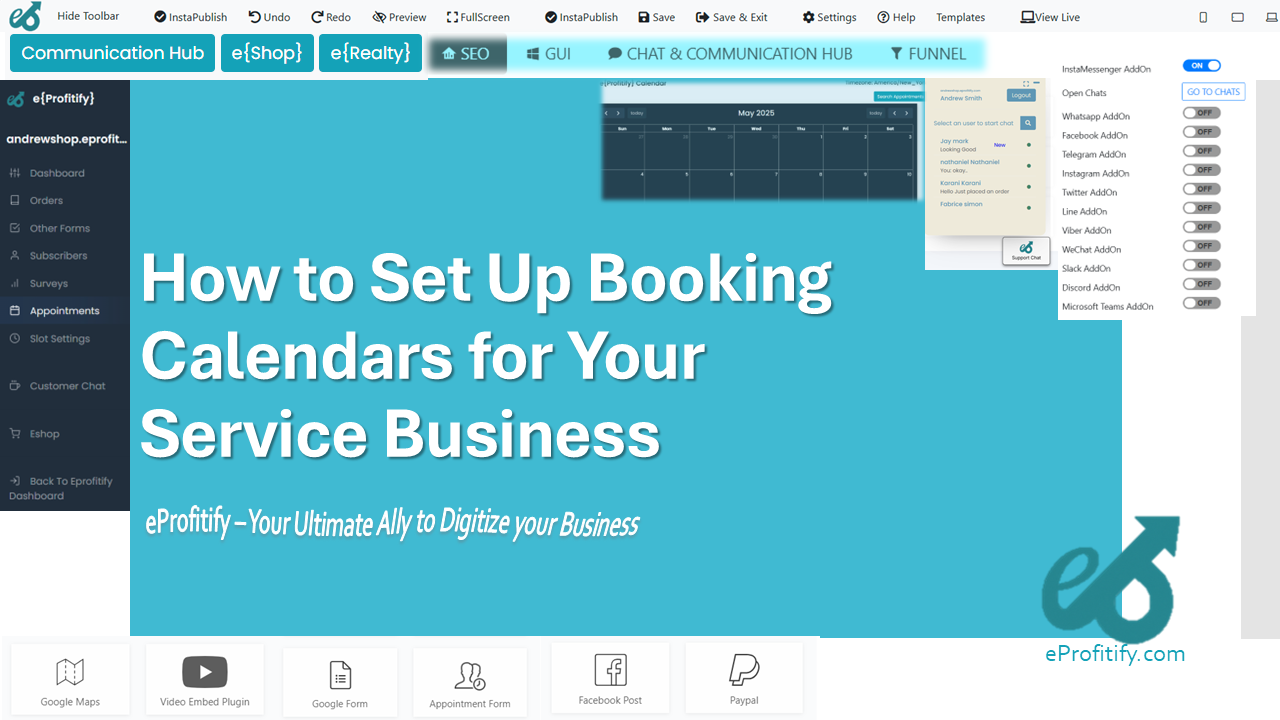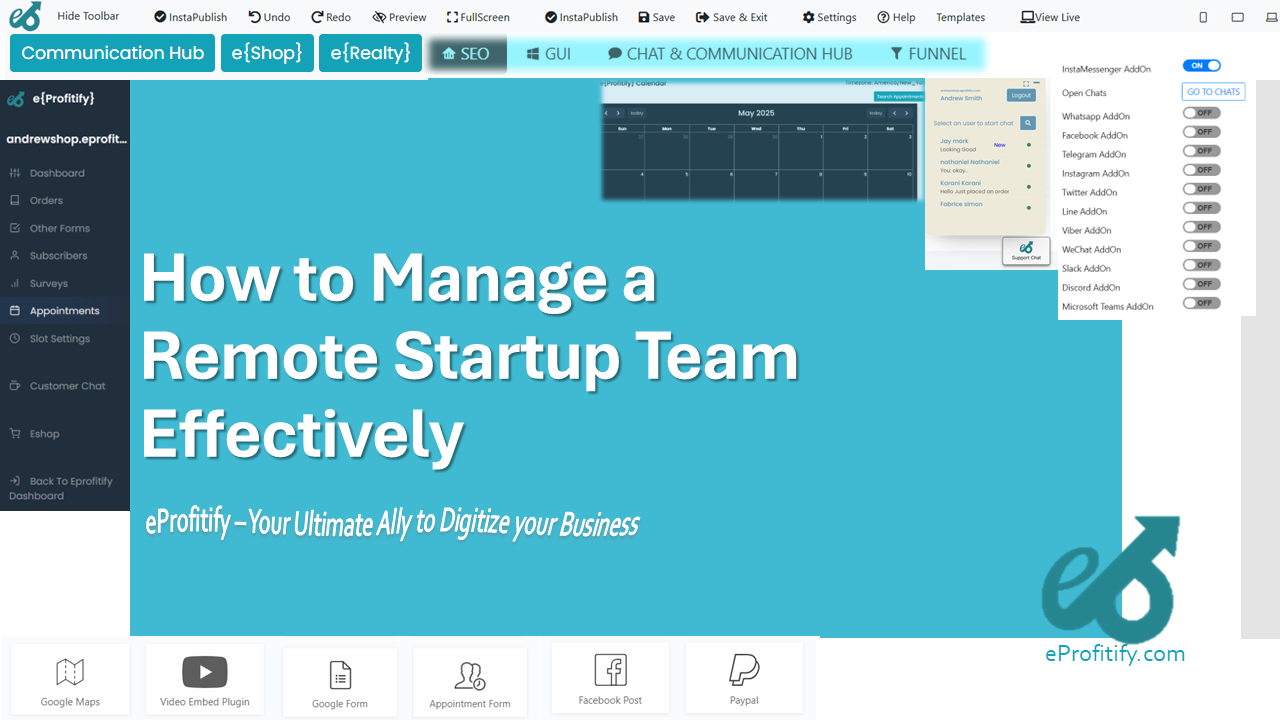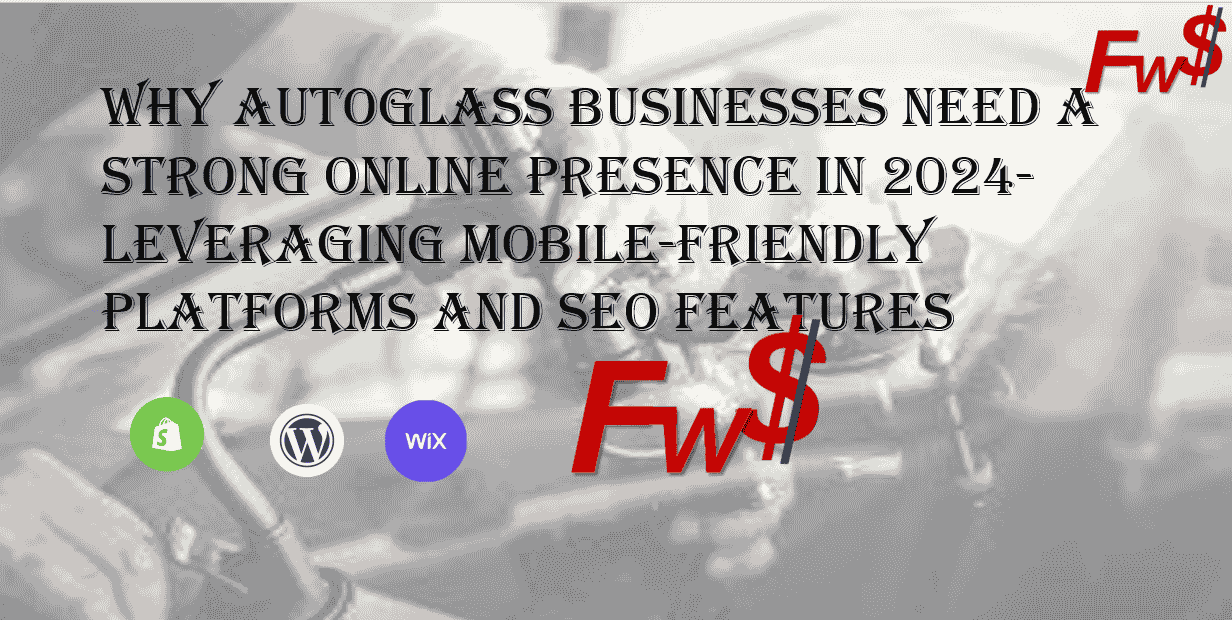Step-by-Step Guide to Registering a Website for Your Business
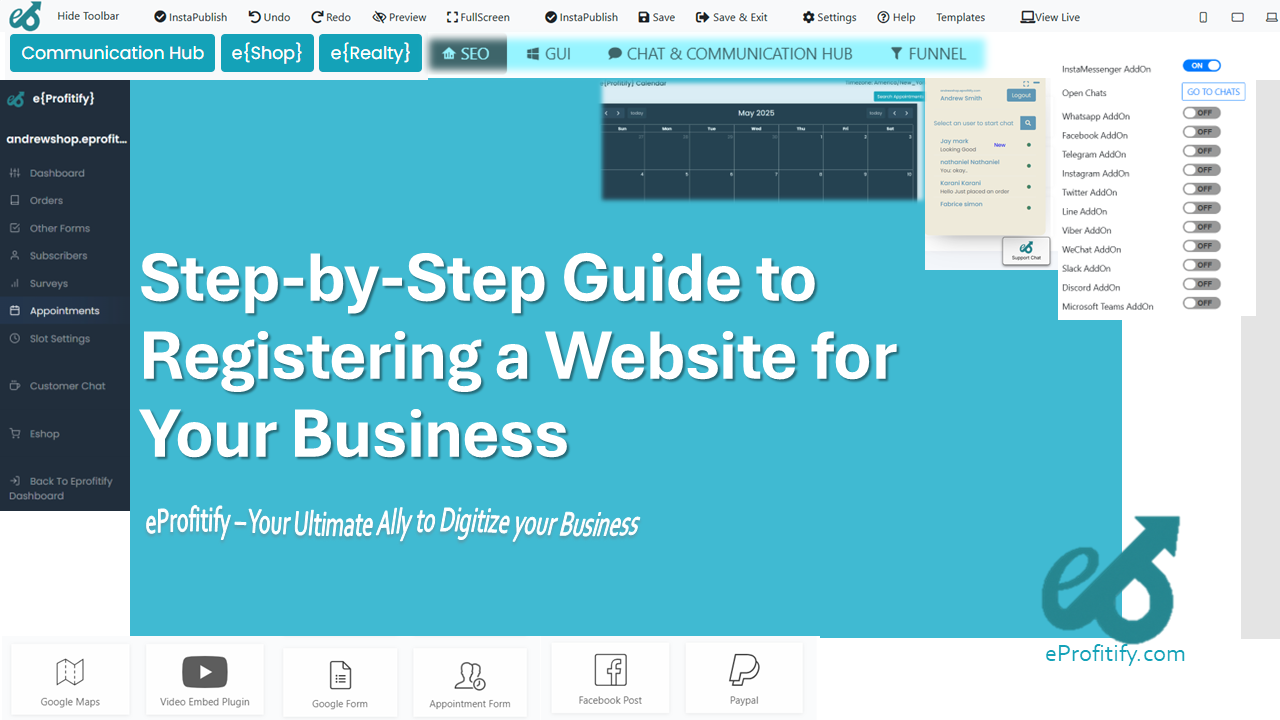
Step-by-Step Guide to Registering a Website for Your Business
Including Statistics and Insights on eProfitify
In today’s digital era, a business website is non-negotiable. With over 1.13 billion websites globally (Web Tribunal, 2023) and ecommerce sales projected to hit $6.3 trillion in 2023 (Statista), establishing an online presence is critical. This guide walks you through creating a professional website, with tips on leveraging tools like eProfitify, a leading all-in-one platform for website publishing and management.
Step 1: Choose a Domain Name
Your domain name is your digital address. Key considerations:
- Relevance: Align it with your brand (e.g., johnsbakery.com).
- Simplicity: Keep it short and easy to spell.
- Extension: Prefer .com (54% of global websites use it).
Tools: Use registrars like GoDaddy, Namecheap, or Google Domains. Check availability and secure your name promptly—over 366.8 million domains were registered in 2022 (Verisign).
Step 2: Select a Web Hosting Provider
Hosting determines your site’s performance. Options include:
- Shared Hosting: Affordable ($2–$15/month) but slower.
- VPS/Dedicated Hosting: Faster, scalable, but pricier.
- Cloud Hosting: Balanced performance and cost.
Key Stats:
- 68% of users abandon sites that take longer than 3 seconds to load (Portent).
- Look for 99.9% uptime guarantees and 24/7 support.
Step 3: Register Domain and Hosting
Many providers (e.g., Bluehost, HostGator) bundle domain registration and hosting.
- SSL Certificates: Essential for security and SEO. Google prioritizes HTTPS sites.
- Costs: Expect $10–$50/year for domains and $3–$30/month for hosting.
Step 4: Build Your Website
Here’s where eProfitify shines. Unlike basic builders, it offers:
- Drag-and-Drop Editor: No coding required.
- Integrated Tools: CRM, appointment scheduling, instant messaging, and ecommerce.
- SEO Optimization: Built-in tools to boost search rankings.
Why eProfitify?
- All-in-One Solution: Combines website building with CRM (businesses using CRM see 29% higher revenue, Nucleus Research) and ecommerce (supporting payment gateways like Stripe).
- Appointment Management: 70% of customers prefer online booking (Forbes).
- Mobile-First Design: 59% of global web traffic comes from mobile (Statista).
Alternatives: WordPress (40% of websites use it) or Wix for simpler needs.
Step 5: Design and Content Creation
Focus on user experience (UX):
- Mobile Responsiveness: 61% of users won’t return to a poorly mobile-optimized site (Google).
- SEO Content: Use keywords naturally. Blogs can increase traffic by 55% (HubSpot).
Tools: Canva for graphics, Grammarly for editing. Embed eProfitify’s instant chat widget for real-time customer support.
Step 6: Test Functionality
Ensure everything works:
- Check links, forms, and checkout processes.
- Test speed via Google PageSpeed Insights.
- Validate mobile responsiveness.
Step 7: Launch the Website
- Announce via email, social media, and ads.
- Use eProfitify’s CRM to segment and notify your audience.
Step 8: Maintain and Update
- Analytics: Track traffic with Google Analytics.
- Backups: Use eProfitify’s automated backups.
- Updates: Regularly refresh content and security patches.
Conclusion
A well-crafted website elevates your brand and drives growth. Tools like eProfitify simplify the process by bundling design, CRM, ecommerce, and marketing tools into one platform, saving time and resources. With 47% of shoppers expecting sites to load in under 2 seconds (Unbounce), investing in a robust platform is essential. Start building today to tap into the booming digital economy!
By integrating eProfitify, you’re not just creating a website—you’re launching a dynamic hub for customer engagement and sales. 📈




